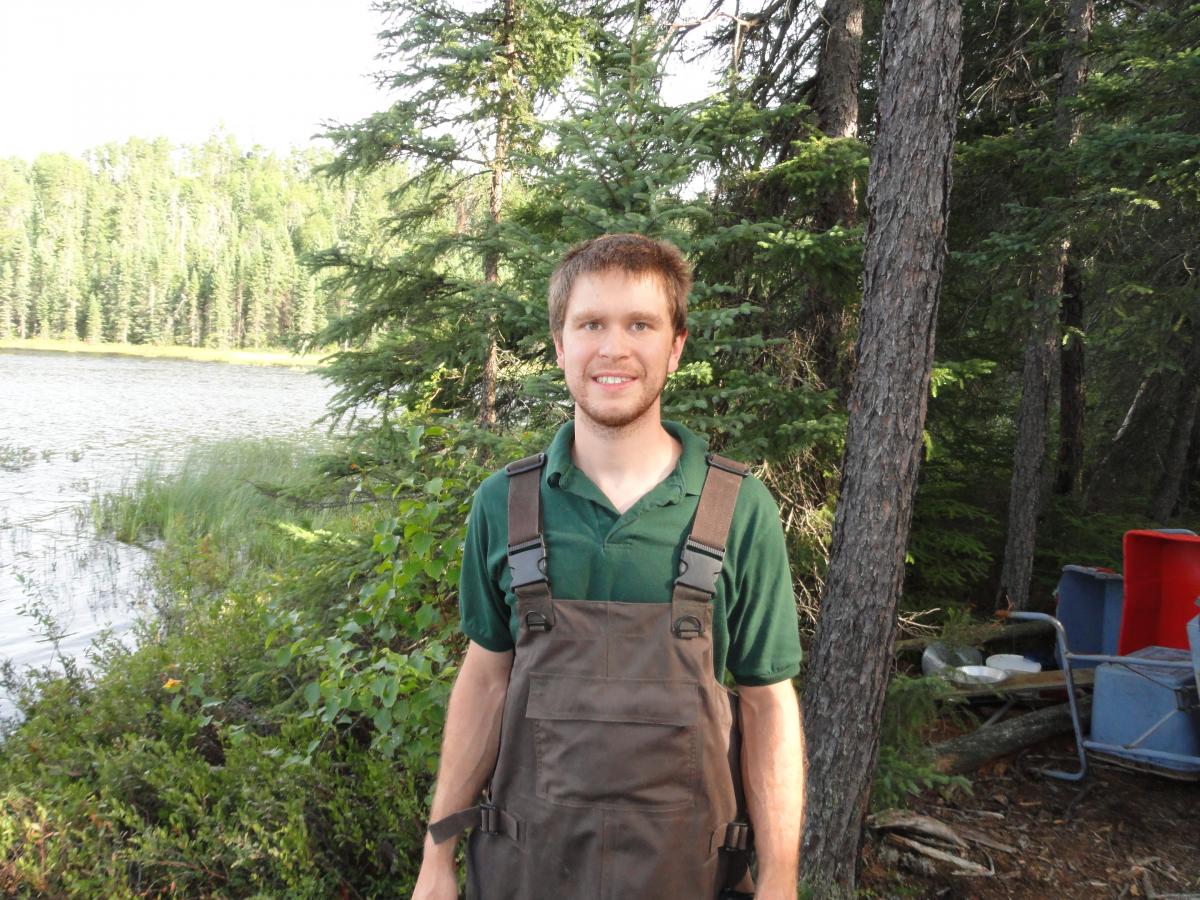As the summer field season at IISD-ELA continues, Dan Rearick’s research is in full swing. A PhD candidate fromTrent University, Dan is part of a team of researchers working on the Lake Ecosystem Nanosilver Study at IISD-ELA, researching the effects of anti-microbial nanoparticles on lakes.
Prior to attending Trent and working at the Experimental Lakes Area, Dan worked on a wide range of environmental issues across the United States. Originally from Pennsylvania, Dan has studied everything from earthworms in Virginia, to cutthroat trout in Montana, to whitetail deer in his home state. When he heard there was an opening to work at IISD-ELA, Dan jumped at the opportunity. “What drew me to want to work at ELA is that I was able to do research that other researchers aren’t able to do in lab settings,” he explains.
Dan first learned about the Experimental Lakes Area as an undergraduate student at Clarion University of Pennsylvania, where he studied biology. “It’s pretty prevalent even in the States to hear about ELA,” says Dan.
Now in his third field season at IISD-ELA, Dan, along with several others working on the nanosilver study, is busy researching the effects of nanosilver particles on lakes. Nanosilver is an anti-microbial agent used in a wide range of products, including socks, paint and even toothbrushes. “In the past 10 years,” says Dan, “hundreds of products have appeared with nanosilver in them.” Regular use of these everyday items can lead to the nanosilver wearing off the products and entering waterways.
With little evidence available on how nanosilver is affecting the environment, the research at IISD-ELA is focused on effects across the entire food web, including fish, zooplankton (tiny animals that live in the water) and macroinvertebrates (organisms that do not have backbones and are large enough to be seen with the naked eye). Dan’s PhD research is especially focused on the fate of nanosilver in lakes, as well as its potential effects on bacteria and algae. “The main chapters of my PhD will be focusing on fates,” he says. “So, where is the silver going across the lake, vertically, throughout stratification, and then through seasons? The other aspect would be looking at the biological effects on bacteria, in addition to algae communities.”

Dan is quick to note that the point of this research is to help make better decisions on how nanosilver is used and regulated. “Currently there isn’t, to my knowledge, any major regulation of nanosilver,” he says. Whole-lake research at IISD-ELA may help inform future policies about the use of nanosilver.
On a personal level, Dan has loved his time doing research at IISD-ELA. Part of that is due to the natural beauty of the region. “Being out here, being in the wilderness area is an experience you don’t usually get to do with any research,” Dan says.
While he will be returning to Trent University in the coming months to continue his PhD work, Dan’s time at IISD-ELA has been unforgettable.
“Having the opportunity to do science that is recognized at the worldwide level is pretty awesome to me. And then, working with the people too—there’s a lot of experience here, so I’ve learned a lot.”